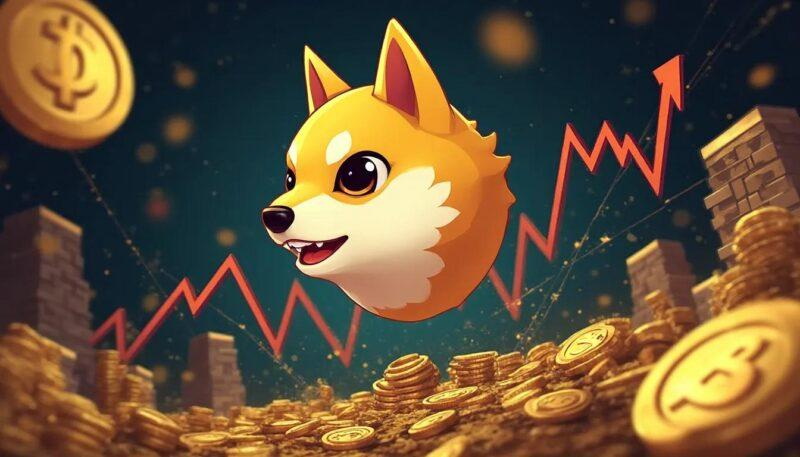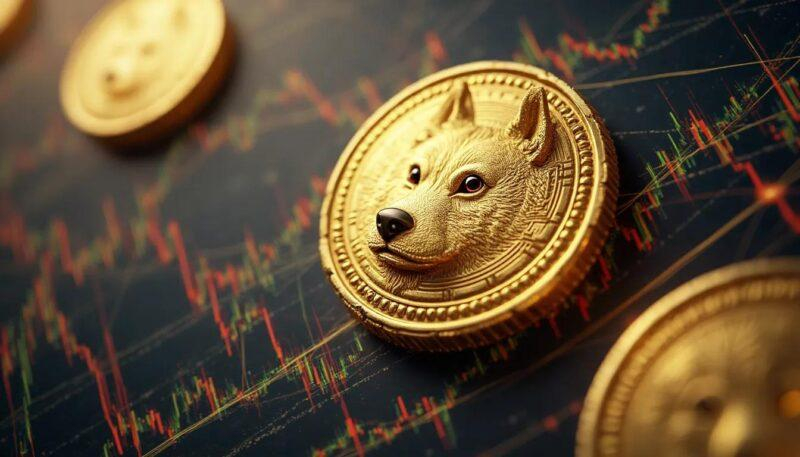In the dynamic world of cryptocurrency, one digital coin has captured the hearts of investors and meme lovers alike: Dogecoin. As the popularity of this playful cryptocurrency continues to soar, many are curious about how its fees compare to other cryptocurrencies. Join us on a journey through the world of Dogecoin fees versus the costs of other cryptos, and discover the ins and outs of navigating this exciting and ever-changing market.
Comparing Dogecoin Transaction Fees to Major Cryptocurrencies
Dogecoin Transaction Fees Overview:
When it comes to sending cryptocurrencies, transaction fees play a significant role in determining the cost-effectiveness of a particular digital asset. Dogecoin, known for its fun-loving Shiba Inu mascot, has gained popularity for its low transaction fees compared to other major cryptocurrencies in the market. Despite its meme-inspired origins, Dogecoin has proven to be a reliable and cost-efficient option for individuals looking to transfer funds digitally.
Compared to cryptocurrencies like Bitcoin and Ethereum, Dogecoin stands out for its minimal transaction fees, making it an attractive choice for micro-transactions and everyday use. Additionally, Dogecoin transactions are processed quickly, thanks to its active community and efficient blockchain technology. This combination of low fees and fast processing times has positioned Dogecoin as a viable alternative for users seeking a seamless and affordable way to send and receive digital assets.
For a more comprehensive understanding, let’s take a closer look at how Dogecoin transaction fees compare to those of major cryptocurrencies like Bitcoin, Ethereum, and Litecoin:
| Cryptocurrency | Average Transaction Fee |
|---|---|
| Bitcoin | $25.50 |
| Ethereum | $5.75 |
| Litecoin | $0.56 |
| Dogecoin | $0.01 |
Understanding the Factors Influencing Dogecoin Fees
When it comes to , it’s essential to compare them with other crypto costs. Dogecoin fees vary based on several factors, including network congestion, transaction size, and market demand. The fees associated with Dogecoin transactions are typically lower compared to other cryptocurrencies like Bitcoin and Ethereum, making it an attractive option for users looking to minimize transaction costs.
One key factor that influences Dogecoin fees is network congestion. During times of high demand, such as when trading volumes surge or when there are network delays, transaction fees can increase. This is because miners prioritize transactions with higher fees, leading to a competitive fee market. Understanding when to send transactions can help users save on fees, especially during peak times when fees are higher.
Another factor that influences Dogecoin fees is the size of the transaction. Larger transactions require more data to be processed, which can result in higher fees. Keeping transactions small and concise can help reduce fees, making it more cost-effective for users. By being mindful of the transaction size and timing, users can optimize their Dogecoin fees and ensure efficient transactions on the network.
Tips for Minimizing Dogecoin Transaction Costs
When it comes to minimizing Dogecoin transaction costs, there are several strategies you can implement to ensure you are getting the best value for your money. One way to reduce fees is by choosing the right time to make your transactions. By monitoring the network traffic and selecting off-peak times, you can avoid high congestion periods and lower your costs.
Another tip for minimizing Dogecoin transaction costs is to consolidate your transactions. Instead of making several small transactions, try to batch them together into one larger transaction. This can help reduce the number of inputs and outputs, ultimately lowering the fees you have to pay.
Lastly, consider using a wallet that allows you to set custom fees. By adjusting the fee according to the current network conditions, you can optimize your transaction costs. Keep in mind that higher fees may lead to faster confirmation times, so finding the right balance is key.
Analyzing the Advantages and Disadvantages of Dogecoin Fees
When it comes to comparing Dogecoin fees with other cryptocurrencies, there are several advantages and disadvantages to consider. One advantage of Dogecoin fees is their low cost compared to some other popular cryptocurrencies like Bitcoin and Ethereum. This makes Dogecoin a more affordable option for users looking to transact with digital currency.
On the other hand, one disadvantage of Dogecoin fees is the potential for slower transaction speeds during times of high network congestion. This can result in longer wait times for transactions to be confirmed on the blockchain, especially when compared to faster cryptocurrencies like Litecoin or Ripple. However, for users who are not in a rush, the lower fees may outweigh the slower transaction speeds.
In addition, when , it is important to consider the overall market volatility of the cryptocurrency. While low fees may be attractive, the value of Dogecoin can fluctuate significantly, affecting the overall cost of transactions. It’s essential for users to weigh the potential savings on fees against the risks of price volatility before deciding to use Dogecoin for their transactions.
Recommendations for Managing Crypto Costs during Volatile Periods
During times of market volatility, it’s essential to take proactive steps to manage cryptocurrency costs effectively. One way to approach this is by comparing the fees associated with different cryptocurrencies, such as Dogecoin, Bitcoin, Ethereum, and others. By understanding the cost differences between these digital assets, investors can make informed decisions about where to allocate their funds.
When exploring Dogecoin fees versus other crypto costs, it’s important to consider factors such as transaction fees, network congestion, and market fluctuations. Dogecoin is known for its low transaction fees, making it an attractive option for those looking to avoid high costs during times of high volatility. On the other hand, cryptocurrencies like Bitcoin and Ethereum may experience higher fees and longer confirmation times during peak periods.
By closely monitoring the fees associated with different cryptocurrencies and staying informed about market trends, investors can minimize costs and optimize their investment strategy. Additionally, diversifying across a range of digital assets can help spread risk and protect against potential losses during turbulent times in the cryptocurrency market.
Q&A
Q: What makes Dogecoin fees stand out compared to other cryptocurrencies?
A: Dogecoin fees are much lower than other cryptocurrencies, making it a cost-effective choice for transactions.
Q: How do Dogecoin fees compare to popular cryptocurrencies like Bitcoin and Ethereum?
A: Dogecoin fees are significantly lower than Bitcoin and Ethereum fees, making it a more attractive option for those looking to save on transaction costs.
Q: Are there any drawbacks to using Dogecoin due to its low fees?
A: While low fees can be beneficial, they may also lead to slower transaction processing times during periods of high demand in the Dogecoin network.
Q: How can users ensure they are getting the best value for their transactions with Dogecoin?
A: Users can make use of various online tools and calculators to compare fees across different cryptocurrencies and choose the one that best suits their needs.
Q: Should investors consider Dogecoin solely based on its low fees?
A: While low fees may be an attractive feature, investors should also consider other factors such as volatility and market trends before investing in Dogecoin.
In Conclusion
In conclusion, navigating the world of cryptocurrency fees can be a daunting task. Dogecoin, with its low transaction costs, presents a viable option for those looking to explore the digital currency market without breaking the bank. By comparing Dogecoin fees with those of other cryptocurrencies, investors can make informed decisions about where to allocate their resources. Remember, the world of crypto is constantly evolving, so stay informed and make the choices that best align with your financial goals. Happy exploring!





